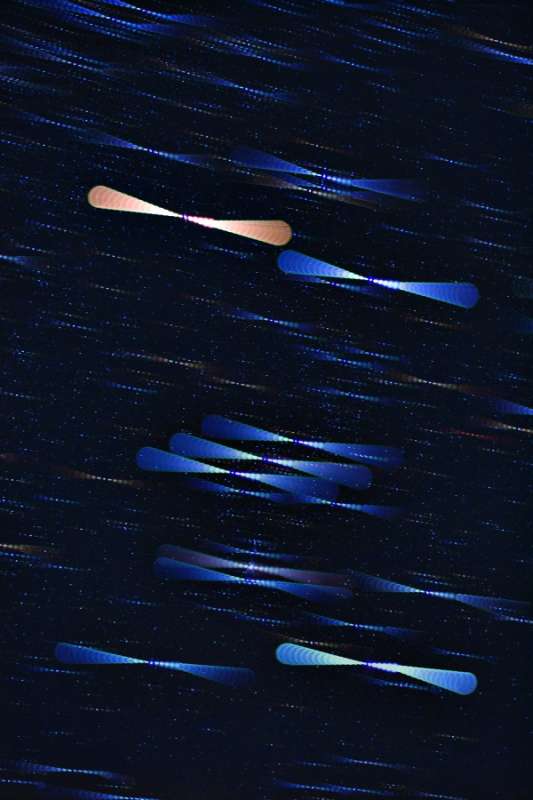
|
Credit & Copyright: Jens Hackmann
Explanation:
What determines
a star's color?
Its temperature.
Red stars are cool, with surface temperatures of around 3,000
kelvins (K),
while blue stars are hotter and can have temperatures over 30,000 K.
Our own lovely "yellow" Sun's temperature is a
comforting 6,000 K.
Differences in star colors are particularly easy to see
in this intriguing composite view of
the constellation Orion, made while experimenting with a star trail
step-focus technique.
In it, a series of 35 consecutive exposures were combined to produce
trails of stars moving left to right through
the frame, while changing focus in steps.
Beginning and ending with the camera out of focus
produced a sharply focused exposure near the middle of
the series and blurs the star trails into a bow tie shape.
For the brighter stars, blurring produces more saturated colors
in the images.
At the upper left, Orion's cool red
supergiant Betelgeuse
stands out from the other, hotter, bluish stars composing
the body of the constellation.
Not a star at all, the
Orion Nebula contributes a
pinkish tint below center.
Also remarkable in the field, the fainter step focus
trail of cool, deep red carbon star
W Orionis
is near the center right edge, its red hue enhanced by a
carbon-rich composition.
|
January February |
| ||||||||||||||||||||||||||||||||||||||||||||||||
NASA Web Site Statements, Warnings, and Disclaimers
NASA Official: Jay Norris. Specific rights apply.
A service of: LHEA at NASA / GSFC
& Michigan Tech. U.
Based on Astronomy Picture
Of the Day
Publications with keywords: Orion - color - star
Publications with words: Orion - color - star
See also:
